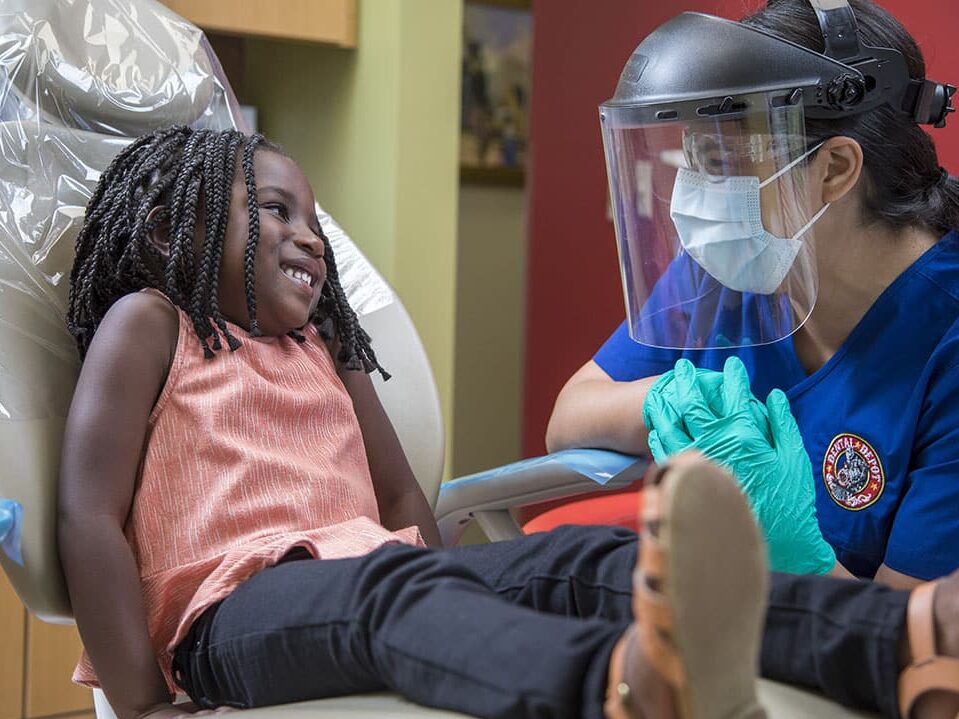Braces or other orthodontic treatments go beyond basic oral health and hygiene to help establish appropriate jaw alignment and function. Properly aligned teeth are easier to clean and maintain, reducing the risk of gum disease, tooth decay, or other periodontal conditions. A proper bite is also essential for supporting good biting, chewing, and speech development, especially in young children.
Teeth and jaw misalignment problems in children are fairly common and occur for several reasons. Some are inherited, while others are the result of pediatric habits, dental disease, or accidents. You may notice irregularities on your own, or your child’s dentist may recommend a second opinion from an orthodontist. Regardless of how or when you begin to notice a potential problem, only a dentist or orthodontist can be sure that your child needs braces.
The American Association of Orthodontics (AAO) recommends that your child visit an orthodontist by age seven. However, certain conditions with jaw growth or teeth eruption may warrant a visit as early as five or six. Treatment may not begin this early, but a preventative consultation can help you and your child’s orthodontist develop a plan for the future.

Some orthodontic issues may be easier and faster to correct if they are identified and treated earlier, rather than after adult teeth have come in or facial development is nearly complete. Early or “interceptive” treatment is an orthodontic treatment performed while a child still has some baby teeth, and options may include either a fixed or removable appliance to move teeth, change jaw position, or hold other teeth in place. It may also be necessary to remove baby teeth to promote better eruption of adult teeth.
Orthodontic treatment cannot only improve the aesthetics of your child’s smile, but it can also prevent potential problems down the road, such as deteriorating dental health, dental pain or discomfort, and difficulty in chewing, speaking, or dental care.
While your dentist plays a crucial role in the routine care and cleaning of your child’s teeth and can provide helpful recommendations or referrals for possible orthodontic care, the actual implementation of orthodontic treatment is best left to an orthodontist certified by the AAO. After graduating from dental school, these specialists then complete an additional two to three years in an accredited orthodontic residency program. Trusting your care to a certified orthodontist ensures your child receives the proper treatment for a healthy smile that lasts a lifetime.
Dental Depot maintains an experienced, AAO-certified orthodontist on staff at each of our four convenient orthodontic locations. This allows us to provide you and your family with unparalleled continuity of dental care, from your child’s first routine check-up to any orthodontic needs. To find out more about our orthodontic options, or to see if your child may benefit from orthodontic treatment, schedule a free consultation by visiting our website at dentaldepot.net/orthodontics.
For more information on your orthodontic treatment options, or to schedule a complimentary consultation with one of our orthodontists, visit our website at dentaldepot.net/find-location to find an office near you.
